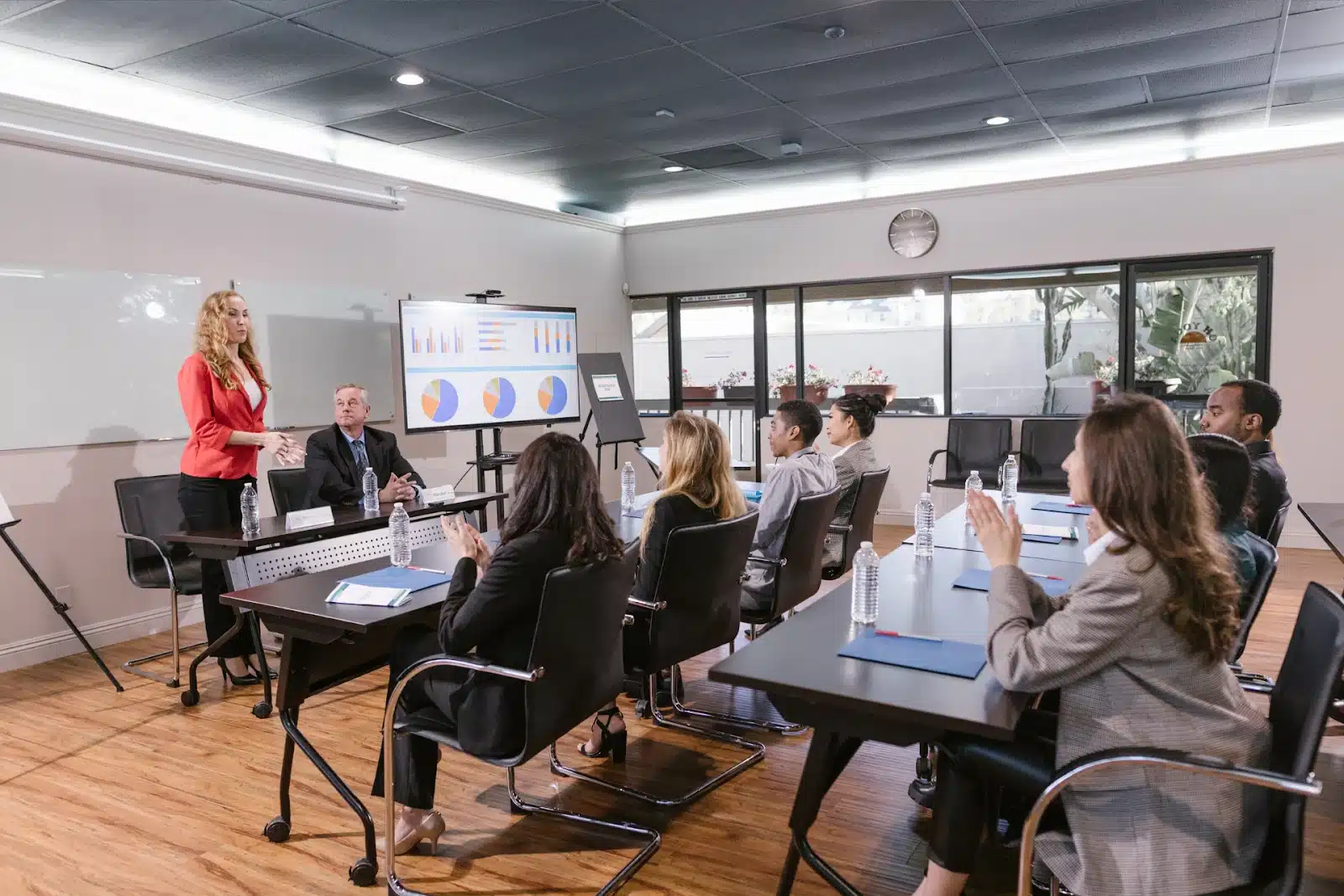
Smart Audience Engagement Tactics for Presenters Who Want Impact
Presentations have long been a staple in the business world, serving as a primary method for sharing information, pitching ideas, and engaging with audiences. However, traditional presentation methods often fall short in creating meaningful interactions. As the landscape of communication evolves, so too must the strategies used by presenters. This article explores smart audience engagement tactics that can transform standard presentations into impactful experiences.
Understanding Your Audience
Before diving into tactics, it’s essential to understand the audience. Knowing who they are, what they care about, and how they prefer to engage can dramatically influence the effectiveness of a presentation. For instance, a tech-savvy audience may respond better to interactive elements, while a more traditional group might appreciate straightforward information delivery. Additionally, understanding the demographics of your audience, such as age, profession, and cultural background, can provide deeper insights into their expectations and preferences. This knowledge allows presenters to craft messages that resonate on a personal level, making the content not only relevant but also compelling.
Creating Personas
One effective way to understand your audience is by creating personas. These fictional representations of your ideal audience members can help tailor your content and engagement strategies. Consider Jamie, a sales manager at a tech company, who aims to make her presentations engaging while capturing leads. By identifying her needs and frustrations, presenters can create a more relatable and impactful experience. Furthermore, developing multiple personas can illuminate the diverse perspectives within your audience, enabling you to address varying interests and concerns throughout your presentation. This layered approach ensures that no segment of your audience feels overlooked, fostering a more inclusive atmosphere.
Gathering Feedback
Feedback is crucial for understanding audience preferences. Utilize surveys or informal polls before the presentation to gauge what topics interest them most. This not only helps in tailoring the content but also makes the audience feel valued and involved from the outset. Post-presentation feedback is equally important; it can provide insights into what resonated well and what could be improved for future engagements. Consider implementing a quick feedback loop, such as a digital form or a live Q&A session, allowing attendees to express their thoughts in real-time. This not only enhances the learning experience but also builds a sense of community, as audience members see their input shaping future discussions.
Utilizing Technology for Engagement
In today’s digital age, technology offers numerous tools to enhance audience engagement. By leveraging these tools, presenters can create interactive experiences that resonate with their audience. The integration of technology not only makes presentations more captivating but also fosters a sense of community among attendees, encouraging collaboration and shared learning. As we explore various technological advancements, it becomes clear that they can transform a standard presentation into an immersive experience that captivates and informs.
AI-Powered Q&A
One of the most innovative advancements in presentation technology is AI-powered Q&A. This feature allows presenters to receive real-time answers to audience questions during the presentation. For example, PresEngage utilizes AI trained on the presenter’s content to provide instant responses, ensuring that no question goes unanswered. This not only keeps the audience engaged but also allows the presenter to focus on delivering their message without interruptions. Furthermore, the AI can analyze the types of questions being asked, providing valuable insights into audience interests and knowledge gaps, which can be addressed in future presentations or discussions.
SMS Participation
Another effective tool is SMS participation. By allowing audience members to engage via text message, presenters can eliminate barriers associated with app downloads or logins. This frictionless approach encourages participation from everyone, including those who may feel hesitant to speak up in a traditional setting. With a simple text, attendees can ask questions or provide feedback, creating a dynamic two-way conversation. Additionally, SMS participation can be enhanced with features such as live polling or sentiment analysis, where audience responses can be aggregated and displayed in real-time, providing immediate feedback on the presentation’s effectiveness and engagement level. This not only empowers the audience but also allows presenters to adapt their delivery on the fly, ensuring that the content remains relevant and engaging throughout the session.
Interactive Presentation Techniques
Engagement isn’t just about technology; it’s also about how the content is delivered. Employing interactive presentation techniques can significantly enhance audience involvement and retention. By transforming a traditional monologue into a dynamic dialogue, presenters can create an atmosphere that encourages curiosity and active participation. This shift not only makes the presentation more enjoyable but also ensures that the information is more effectively absorbed and remembered by the audience.
Live Polling and Surveys
Integrating live polls and surveys during the presentation can stimulate audience participation. Tools that allow real-time feedback can provide valuable insights into audience opinions and preferences. For instance, asking a question and displaying the results instantly can create a sense of involvement and urgency, prompting further discussion. Moreover, using platforms that allow for anonymous responses can encourage more honest feedback, as attendees may feel more comfortable sharing their true thoughts without the fear of judgment. This can lead to richer discussions and a deeper understanding of the audience’s perspectives.
Breakout Sessions
For larger audiences, consider incorporating breakout sessions. This allows smaller groups to discuss specific topics in-depth, fostering collaboration and engagement. After the breakout, bringing everyone back together for a summary can help consolidate ideas and maintain a cohesive presentation flow. Additionally, assigning roles within the breakout groups, such as a facilitator or note-taker, can enhance accountability and ensure that all voices are heard. This structured approach not only promotes active participation but also encourages attendees to take ownership of the learning process, making the experience more meaningful and impactful.
Follow-Up Strategies
Automated Follow-Ups
Automated follow-up systems can be a game-changer. PresEngage automatically captures audience questions and contact information, enabling personalized follow-ups based on the conversation context. This ensures that no lead is missed and that audience members feel acknowledged after the presentation. Furthermore, these systems can segment audiences based on their interests and engagement levels, allowing for tailored messaging that resonates with each group. For instance, a participant who asked specific questions about a product can receive targeted information that addresses their queries directly, fostering a sense of value and attention.
Engagement Analytics
Utilizing analytics to track engagement metrics can provide insights into what worked and what didn’t. By analyzing data such as question volume, participation rates, and feedback, presenters can refine their future presentations for even better results. This data-driven approach not only enhances future presentations but also demonstrates a commitment to continuous improvement. Additionally, leveraging tools that visualize this data can help presenters quickly identify trends and patterns, making it easier to adapt their strategies. For example, if analytics reveal that a particular topic generated a high volume of questions, presenters might consider dedicating more time to that subject in future sessions, thereby increasing relevance and engagement with their audience.
Creating a Memorable Experience
Ultimately, the goal of any presentation is to create a memorable experience that resonates with the audience. By employing smart engagement tactics, presenters can elevate their presentations from mere information delivery to impactful conversations. This transformation is essential in a world where attention spans are dwindling and audiences are constantly bombarded with information. A well-crafted presentation not only informs but also inspires, leaving a lasting impression that can influence thoughts and actions long after the event has concluded.

Storytelling Techniques
Incorporating storytelling into presentations can captivate audiences and make the content relatable. Sharing personal anecdotes or case studies can help illustrate key points and create an emotional connection with the audience. This not only enhances engagement but also aids in information retention. For instance, a presenter discussing a complex business strategy might share a story about a challenge faced during implementation, detailing the emotions and decisions involved. Such narratives humanize the data, allowing the audience to see themselves in the story and understand the practical implications of the concepts being discussed.
Visual Aids and Dynamic Content
Utilizing visual aids can enhance understanding and retention. Dynamic content such as videos, infographics, and animations can break up the monotony of a traditional presentation and keep the audience visually engaged. Ensuring that visuals complement the spoken content is crucial for maintaining coherence and focus. Moreover, the strategic use of color, typography, and layout can significantly impact the audience’s perception and emotional response to the material. For example, a well-placed infographic can distill complex data into digestible visuals, making it easier for the audience to grasp and remember key statistics. Additionally, incorporating interactive elements, such as live polls or Q&A sessions, can further enhance engagement, allowing the audience to feel like active participants rather than passive listeners.
From Presentation to Conversation
In a world where attention spans are dwindling, presenters must adapt their strategies to create engaging and impactful experiences. By understanding the audience, leveraging technology, employing interactive techniques, and implementing effective follow-up strategies, presenters can transform their presentations into dynamic conversations that resonate long after the event.
With tools like PresEngage, presenters can seamlessly integrate these tactics, ensuring every presentation is not only informative but also interactive and memorable.
Take Your Presentations to the Next Level with PresEngage
Ready to captivate your audience with every presentation? PresEngage is here to revolutionize your engagement strategy. Our AI-powered SMS Q&A platform is designed to create seamless, real-time interactions, ensuring that every participant’s voice is heard and every question is answered. Say goodbye to the hurdles of app downloads and hello to effortless, inclusive conversations. Whether you’re a presenter, educator, or business professional, PresEngage is your partner in transforming attention into actionable results. Start for FREE today and experience the power of truly interactive presentations with PresEngage.
Present Smarter. Engage Answer Convert Close Remarkably.
Dazzle your audience with Real-Time Q&A powered by your AI Co-Presenter.(Patent Pending)
PresEngage™ makes you look brilliant by connecting with everyone, instantly.
No Credit Card Required. 100% Risk Free.
Frictionless Audience Experience GUARANTEED.






